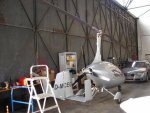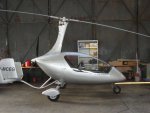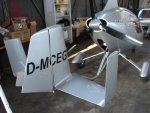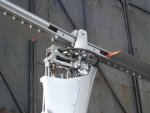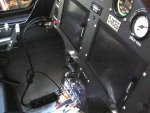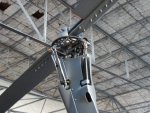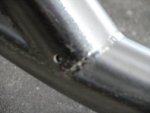Hello,
some of my findings on the Calidus.
The controls from the walking beam to the rotor head are indeed push-pull rods. This has been discussed as being a possible source of failure.
I miss the accessability of the controls which I learnt to like on the MTOs. Basically you can only check if the controls move, everything is under covers.
Seating is awkward, I am not built like Arnold S. but the retention belts of the seat-back cut into the sides under the arms. The passenger's feet touch the pilot's elbows, if the back seat pedals are flipped forward for the instructor. OK, if you are on asphalt, not so great on on a dirty lawn.
The buttons for PTT, pitch and roll-trim and pre-rotator are co-located to closely that you are likely to press more than one.
The roll trim, on the other hand, is great!
The stick ergonomics are not great, you cannot rest your arm anywhere on normal flight attitude. It comes back too far for people with strong stomach muscles

)).
I have to say that the Calidus is very hard to fly, compared to the MTOs. I blame it on the even shorter rudder:
Any change of throttle results in violent yaw movements. In gusty conditions during landing this is a nightmare. You have to learn to automatically couple your throttle hand with your feet so that you counteract any throttle movement immediately. And this is what I felt, coming from the MTOs, which already have this flaw.
Rudder and front wheel are hard coupled. Once the front wheel lifts, you have to step into the rudder to the right. If now the front wheel bounces down, you are in a time warp ("its just a jump to the ra ra ra ra right").
They could have done better.
Kai.

